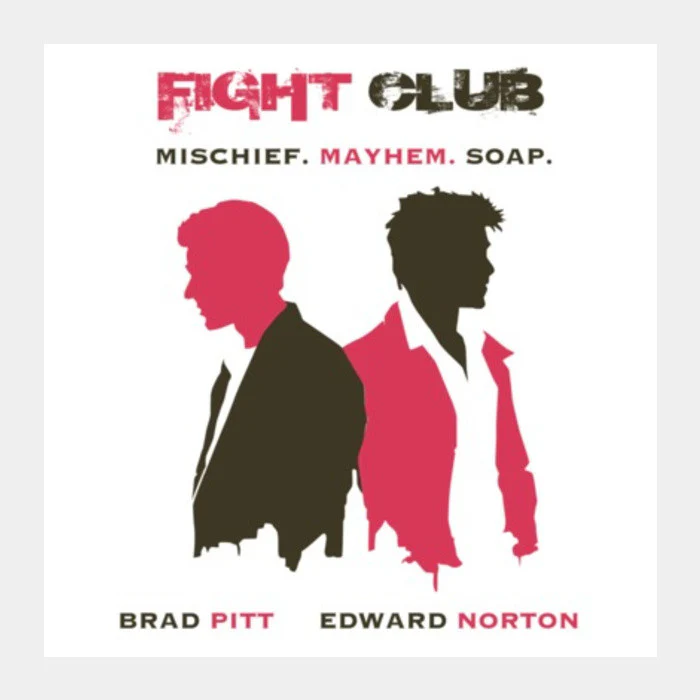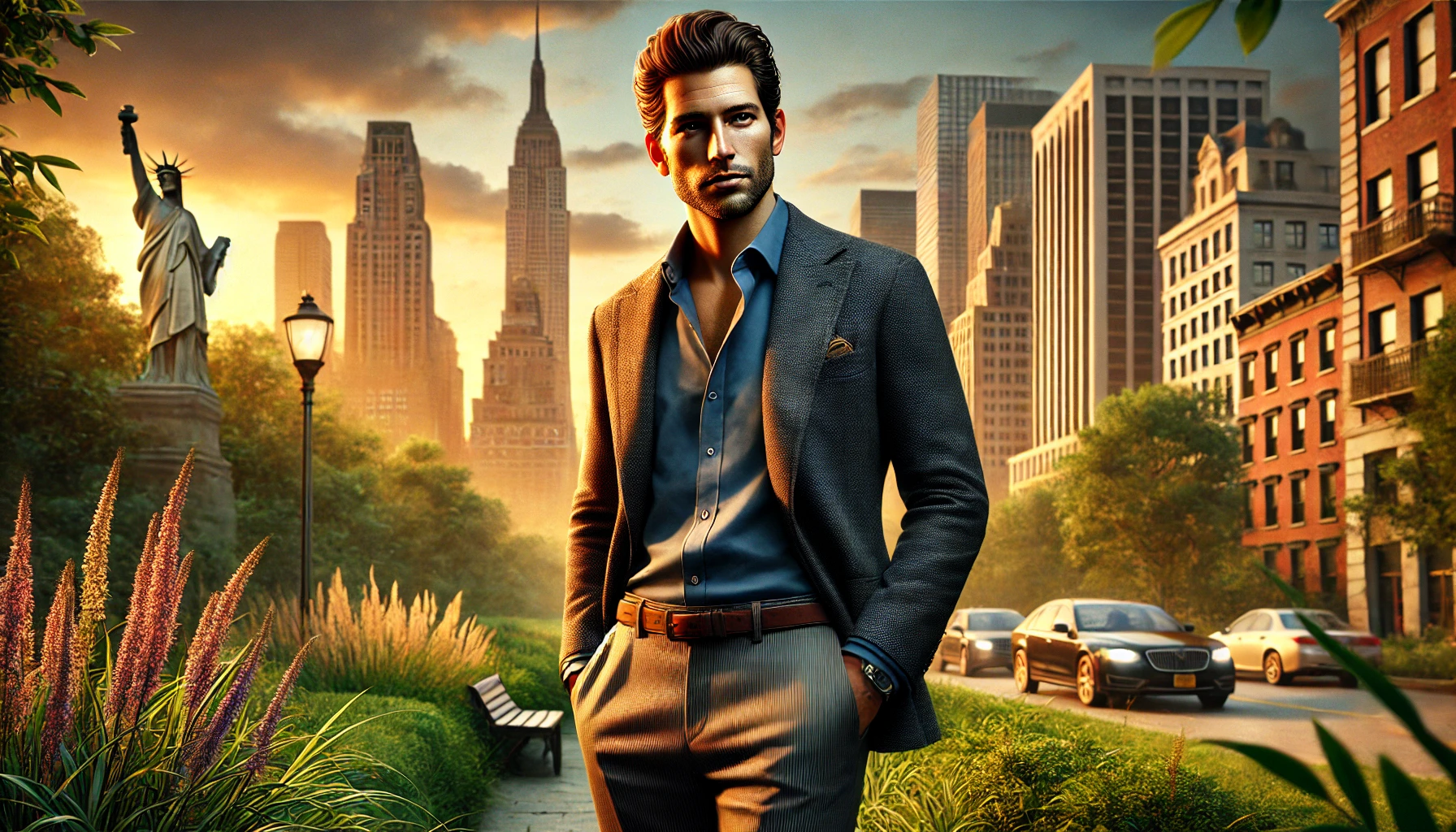A Raw, Unfiltered Portrait of Modern Masculinity
Chuck Palahniuk’s Fight Club is more than just a novel; it’s a cultural phenomenon that has left an indelible mark on contemporary literature and pop culture. Published in 1996, the book quickly gained a cult following, thanks to its raw, unfiltered exploration of masculinity, consumerism, and existential angst. The story of an unnamed narrator and his alter ego, Tyler Durden, resonates deeply with readers who feel disillusioned and disconnected in a world dominated by materialism and superficial values. Fight Club doesn’t just tell a story; it holds a mirror up to society, reflecting the darker aspects of modern life and the struggles of male identity.
Introduction: Welcome to the Club
Since its release it has has held an almost mythic status among readers seeking something darker, more confrontational—something real. It arrived at the twilight of the 20th century, an era awash in self-help books, cubicle-bound careers, and the dawn of internet-driven alienation. For many men, it wasn’t just a novel. It was a wake-up call.
A biting exploration of consumerism, emasculation, and existential crisis, Fight Club tapped directly into the psyche of the disillusioned modern male. With its raw prose and seething anti-establishment tone, it dissected the effects of a post-industrial, identity-starved society—long before terms like “toxic masculinity” and “mental health crisis” dominated cultural discourse.
“We’re the middle children of history, man. No purpose or place.” This iconic line from Tyler Durden cuts to the marrow of what Fight Club represents: a collective howl from a generation of men searching for meaning in a world that has replaced rites of passage with IKEA furniture.

Themes & Modern Parallels: Bleeding Truths in a Numb World
Alienation & the Fragmented Self
At its core, Fight Club is a psychological exorcism. The unnamed narrator—often interpreted as the quintessential Everyman—lives a life so devoid of meaning he develops dissociative identity disorder. His alter ego, Tyler Durden, becomes the vessel through which he externalizes rage, desire, and purpose. Their duality is not just a narrative device; it’s a metaphor for the fractured modern male.
This sense of alienation is more relevant today than ever. As rates of male depression and suicide continue to rise (CDC, 2023), Fight Club feels eerily prophetic. The narrator’s insomnia and emotional numbness mirror the symptoms of chronic stress and dissociation, conditions now endemic in a society increasingly defined by screen time and performative masculinity.
A Satire on Representations of Toxic Masculinity and Repressed Rage
The novel’s depiction of men coming together to beat each other senseless in underground basements may seem extreme, but it reflects a deeper, unsettling truth: men often lack spaces to express vulnerability, grief, or fear. In Fight Club, violence becomes the only language they trust.
Critics have rightly noted the dangerous allure of Tyler’s hyper-masculine ideology. But within this critique lies an uncomfortable honesty: many men, lacking emotional outlets, feel drawn to extreme expressions of control, power, or release. The club is brutal, yes—but it’s also a community. “The first rule of Fight Club is: You do not talk about Fight Club.” Because in real life, men are rarely permitted to talk about their pain.
Anti-Consumerism & Identity Crisis
Tyler’s war on consumer culture—“The things you own end up owning you”—remains one of the most cited lines from the book. And for good reason. In an era of curated Instagram feeds, Amazon wishlists, and self-branding, the existential vacuum Palahniuk described has only deepened.
The narrator’s sterile, catalog-perfect apartment becomes a symbol of identity substitution. We no longer become; we buy. And in the absence of purpose, consumption offers the illusion of selfhood. Tyler tears it all down—not as a villain, but as a symptom of a society that’s lost its soul.
Reader Voices & Raw Reflections
On Goodreads, one reviewer writes:
“It’s the most uncomfortable I’ve ever felt reading a book, but it was the discomfort I needed. I felt seen, and I hated it.“
On Reddit’s r/books, a thread with thousands of upvotes describes Fight Club as a “litmus test for men who feel invisible.” Others call it “dangerous,” “cathartic,” “a punch in the face followed by a hug.”
These polarized responses underscore the novel’s complexity. It doesn’t offer answers. It exposes the rot, leaves it bare, and lets the reader decide whether to recoil or relate.
Cultural Impact: From Basement Brawls to Meme Lore
The 1999 film adaptation, directed by David Fincher and starring Edward Norton and Brad Pitt, catapulted Fight Club into the cultural stratosphere. It took Palahniuk’s cult novel and turned it into a cultural phenomenon. Lines like “You are not your job. You are not how much money you have in the bank” are now part of our modern lexicon.
Memes abound. So do parodies and misreadings. Some viewers idolize Tyler Durden without grasping the satire. This is a tension even Palahniuk has addressed in interviews, notably in his conversation with The Guardian (source) where he reflected on the unintended rise of Tyler as a cultural hero:
“I didn’t anticipate that so many people would completely miss the point.“
In academia, the book has been the subject of numerous papers exploring its intersections with nihilism, postmodern identity, and anarchist philosophy (see JSTOR articles like “Men Without Bodies: Masculinity and the Fragmented Subject in Fight Club”). Scholars debate whether the novel advocates rebellion or simply illustrates its futility.
Why Fight Club Still Hits Hard in 2025
In a world of LinkedIn hustles and loneliness epidemics, Fight Club remains disturbingly relevant. It speaks to the crisis of male identity not with solutions, but with raw exposure. Whether viewed as a cautionary tale or a distorted fantasy, the novel invites readers to confront the systems—internal and external—that keep them trapped.
Its enduring power lies in its duality: it’s both a critique and a confession. It shows us what happens when men are stripped of meaning and offered only consumption in return. And while the answer isn’t underground boxing or domestic terrorism, the impulse for something real still pulses beneath the surface of modern masculinity.
Still Talking about Fight Club
So where does that leave us? Fight Club may not be a roadmap, but it is a mirror. It asks hard questions—about identity, society, and what it means to feel something in a world designed to numb us. It should not be read as gospel, but neither should it be dismissed.
For today’s man feeling unheard, uncertain, or unmoored, the book offers recognition—however uncomfortable it may be. Perhaps that’s why, nearly three decades later, Fight Club still gets passed around in dorm rooms, quoted in therapy sessions, and whispered in forums: “I am Jack’s smirking revenge.”
What does Fight Club mean to you? Is it a toxic fantasy or an honest cry for help? Let’s start the conversation. Drop your thoughts in the comments or tag us with your take.
Recommended Links & Resources:
- 📘 Interview with Chuck Palahniuk – The Guardian
- 🧠 CDC – Suicide & Mental Health Statistics (2023)
- 📚 JSTOR: “Masculinity, Crisis, and the Body in Fight Club”
- 📖 Goodreads: Fight Club Reader Reviews
💥 First rule of Fight Club? Maybe it’s time we broke it.
So, gentlemen, pick up Fight Club and prepare to have your perceptions challenged. Share your thoughts and experiences in the comments—let’s keep the conversation going.




